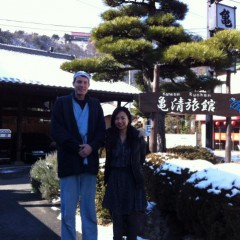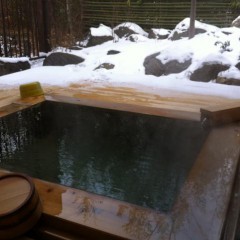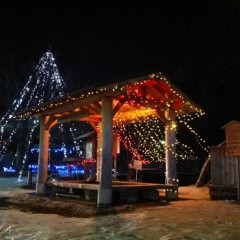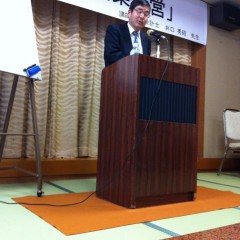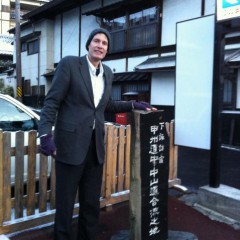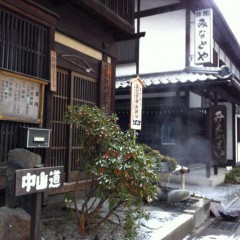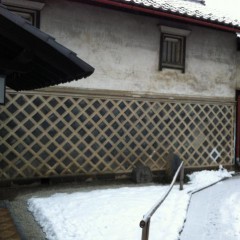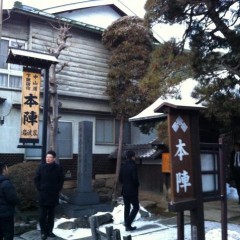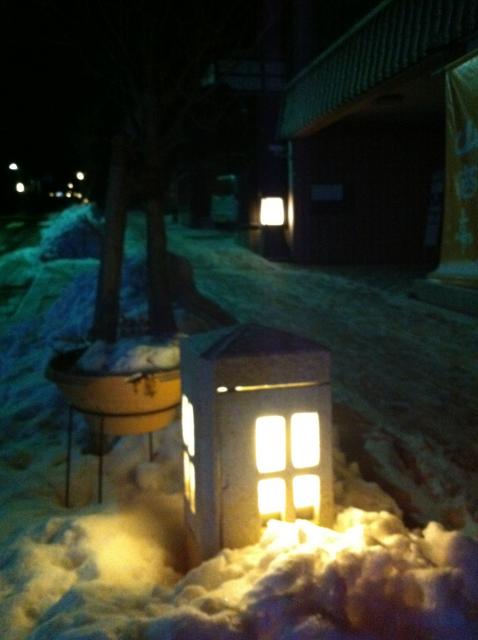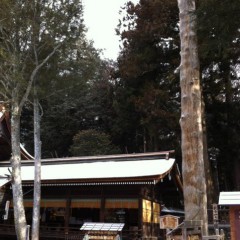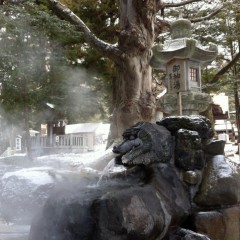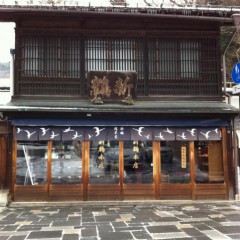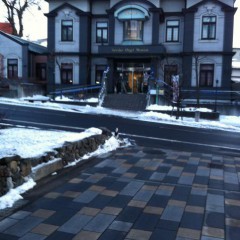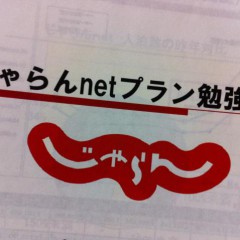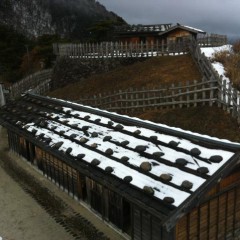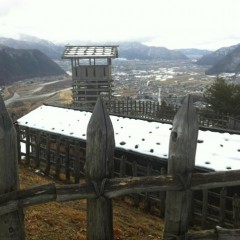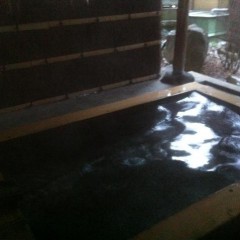
Gingetsu's open air bath, Shimo-Suwa Onsen
長野の温泉は色々と調査している中で、今回は下諏訪温泉。
下諏訪町観光協会によると、
「下諏訪町には20カ所の源泉があり、毎分5100リットルの温泉が湧き出ている...旅館やホテルなど30軒があります。」
元々宿場町と諏訪大社の参拝関係で生まれた温泉街。兄弟の上諏訪温泉と比較したら家族経営な小さい宿が多く、住宅や商店と交われている落ち着いた雰囲気な温泉街。諏訪大社の前に揃っているようで、諏訪湖から約1.5km離れている位地。
(上諏訪温泉は逆に大手ホテル式宿が諏訪湖沿いに並んである。)
湯質はナトリウムとカルシウムの成分が入っていて、透明無臭。微妙な塩っぽい味がする。大半はかけ流しだそうです。
足湯は4つ、公衆浴場は8ヶ所があります。日帰り入浴OKの旅館は7軒があり、「ほんわかゆうゆう券」を1000円で買えば2軒に入れる。「綿の湯」という伝説によると、下諏訪温泉は女神様の化粧水から出たそうです。その伝説を記念するモニュメントもある。
今回は私がお世話になった宿「ぎん月」のお風呂にしか入らなかった。きん月さんに鯉の池のある日本庭園の隣に立派な木造の小屋で男女別な露天風呂がありました。下諏訪温泉の代表的なお風呂だそうです。建物は風情があって、気持ち良かった。
本陣関係「聴泉閣亀」や、秋宮隣の雄大な「ホテル山王閣」と3.3㎞離れている毒沢鉱泉「神乃湯」(鉄分湯の秘湯)は次回に入ってみたいと思った。
そして、一つな入ってみたい公衆浴場があった:菅野温泉。大社通りトンネル状の通路を入って、木の温もりのある昭和レトロの入口は特徴。
中仙道趣散策、下諏訪大社の参拝、時計やオルゴール博物館、明治時代からのせんべい屋さんや羊羹屋さん、いい立ち寄りのお湯。亀清旅館・戸倉上山田温泉へのお出かけの途中で寄る場所としておすすめスポットの一つ。
Next up on my research of Nagano's many onsens is Shimo-Suwa.
Shimo-Suwa Onsen started out as the only post town on the old Nakasendo Road with a natural hot spring. The town further developed as a pilgrimage destination with its Suwa Grand Shrine's Akimiya and Harumiya (Fall and Spring shrines).
According to the local tourism association, 20 onsen wells pump out 5,100 liters of hot spring mineral water per minute, supplying the approx. 30 inns, 4 footbaths and 8 public baths. There is also a 'monument' dedicated to "Wata no Yu" legend about how the onsen was discovered by a goddess as she used the water for its beautifying properties.
Shimo-Suwa's inns are nestled around the entrance to the Grand Shrine Akimiya. They are mostly smaller, family-run inns and are interspersed amongst houses and shops making for a relaxed atmosphere. The location is about 1.5km up from Lake Suwa.
Shimo-Suwa's sister onsen, Kami-Suwa on the other side of Lake Suwa, on the other hand, is made up of mostly large-scale western style hotel-type ryokans lining the lake.
7 of the inns permit day use bathing. With the 1,000 yen 'Honwaka Yuyu' pass, you can use the baths at 2 different inns.
I only got to check out the onsen baths at the inn I stayed at, Gingetsu. That inn features an outdoor bath divided mens and womens in a beautiful traditional wood building next to their Japanese garden and koi pond. It's apparently one of the more representative baths for all of Shimo-Suwa.
Next time I want to check out a few other inns and one of the public baths.
Kameya is one of the more historical inns and is related to the original 'Honjin', the main inn from the Edo post town days.
Hotel Sannokaku is adjacent to the Grand Shrine Akimiya's parking lot and is accordingly grand is size and appearance.
In nearby Dokusawa Onsen (3.3 km away) is a "Hi-tou" (secret onsen). Kami no Yu's baths apparently feature orange colored mineral waters high in iron content.
And then there's a funky public bath, Sugeno Onsen. The entrance from Taisha-dori street is actually like a tunnel, and the actual entrance to the bath features warm wooden construction from Japan's Showa-era golden years. It's apparently well known for its quaint historical charm.
With its Nakasendo townscape, venerable Suwa Grand Shrine, the watch and piano box museums, and all these great spots for an onsen bath, Shimo-Suwa would make a great to stop on the way to Kamesei Ryokan and our from our onsen town, Togura-Kamiyamada.
下諏訪温泉Shimo-Suwa Onsen
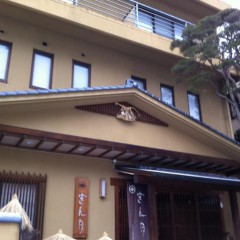
Gingetsu's Facade
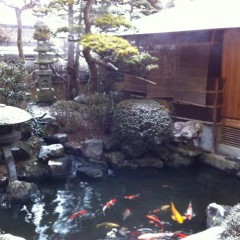
Gingetsu's koi pond with outdoor bath shelter in the background

Gingetsu's indoor bath (men's)
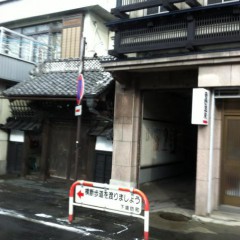
Sugeno Onsen's street entrance

Sugeno Onsen's entrance in the tunnel

Sugeno Onsen's 'golden years' Showa era atmosphere

